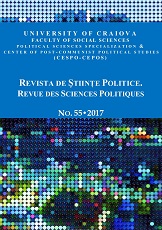Single Nationwide Electoral District, Proportionality,
and Territorial Representation: a Case Study of the Slovak Parliamentary Elections
Single Nationwide Electoral District, Proportionality,
and Territorial Representation: a Case Study of the Slovak Parliamentary Elections
Author(s): Jakub CharvátSubject(s): Politics / Political Sciences, Politics, Political Theory, Political Sciences, Governance
Published by: Editura Universitaria Craiova
Summary/Abstract: The quantitative analysis focuses on effects of a single nationwide electoral district on proportionality of seats–votes shares (Least Squares Index) and proportionality of territorial representation (advantage ratio index at the individual level and an adaptation of distortion index at the aggregate level) in the Slovak parliamentary elections. The case study concludes that metropolitan area (the Bratislava Region) is strongly over-represented in the Slovak parliament while other regions are under-represented. At the same time, the analysis showed that seats-votes proportionality and proportionality of territorial representation are not necessarily opposing principles. For example, the mechanism of the electoral system to the German Bundestag makes clear that it is possible to maintain a high degree of both of them.
Journal: Revista de Științe Politice. Revue des Sciences Politiques
- Issue Year: 2017
- Issue No: 55
- Page Range: 56-67
- Page Count: 11
- Language: English

